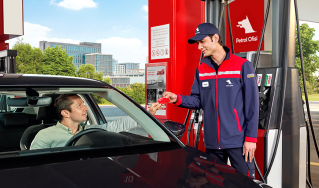
- Corporate
-
Stations
-
Product & Services
- Past Campaigns
- Discount at Vialand Theme Park Exclusively for Petrol Ofisi Mobile Users!
- Up to TRY 200 Worth of Bonus Points at Petrol Ofisi with Bonus Card
- Spring Opportunity for Maxima Engine Oils with Adaptech Technology!
- MaxiPoints Worth up to TRY 125 with Maximum Mobile Payment!
- You have +1 reason to take a break
- A special discount Petrol Ofisi Mobile!
- %38 Discount at Garenta!
- 5x Points for Hepsiburada Premium
-
Lubricants
- Passenger Car Engine Lubricants
- Motorbike Engine Lubricants
- Heavy Commercial Vehicle Diesel Engine Lubricants
- Transmission and Differential Lubricants
- Marine Lubricants
- Industrial Lubricants
- Special Products
- Greases
- Ev Fluids
- Hydraulic System Oils
- Industrial Gear Oils
- Compressor Oils
- Turbine and Circulation Oils
- Rolled Bearing Oils
- Heat Transfer Oils
- Slideway Oils
- Air Tool Oils
- Moulding Oils
- Metalworking Fluids
- Transformer Oils
- Textile Oils
- Other
- Online Services


